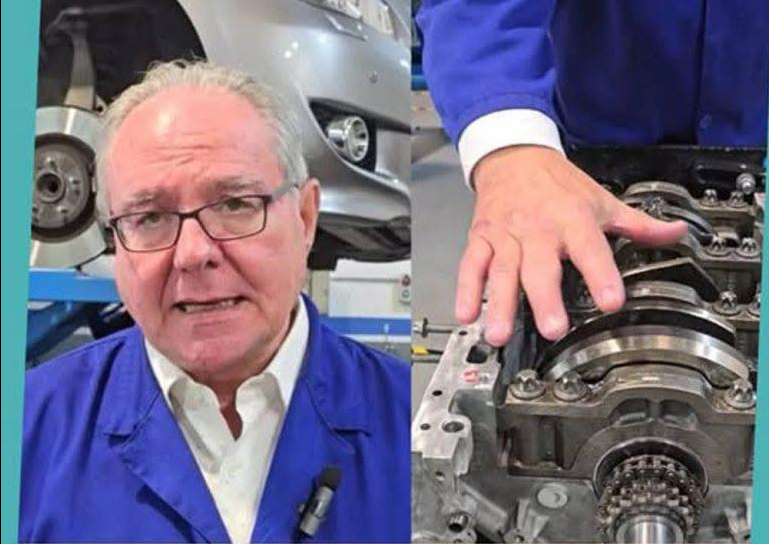Every morning, millions of drivers across the world unknowingly put their engines at risk, repeating a small, seemingly harmless routine that silently chips away at their vehicle’s longevity. They wake up, get ready, grab their coffee, head out the door, and climb into the driver’s seat. They turn the key, hear the engine cough to life, shift into gear, and roll away—believing they’re saving precious time, maybe even seconds here and there. But specialists warn that those fleeting moments of impatience can compound into thousands of dollars in repairs, shortening the life of an engine and creating problems that could have been completely avoided with a little awareness and patience.
One experienced mechanic opened the hood of a car in his workshop, inviting a group of drivers to look closely at what years of this habit had done. The engine was battered, its internal components bearing marks of a slow, silent destruction. Bearings were shaved almost to their minimum tolerance. The crankshaft gleamed with minute scratches. The connecting rods, once perfectly smooth, now displayed patterns of abrasion that spoke louder than any words. “This,” he said, voice steady but grim, “is what impatience looks like inside an engine.”
The explanation is technically simple, but its implications are profound. After a night of inactivity, an engine’s oil—which lubricates and protects every moving component—has settled. In many cases, the engine is nearly dry at key points. When you start the car, the oil pump takes roughly 30 to 40 seconds to circulate lubricant fully through every moving part: pistons, crankshaft, camshaft, timing gears, and valve mechanisms. If you move or accelerate before that protective layer has spread, metal parts grind against each other with only minimal protection. Microscopic scratches appear almost instantly, invisible to the naked eye but cumulative over weeks, months, and years. Over time, these scratches grow, weakening the structure of the engine and eventually leading to catastrophic failures.
In the mechanic’s demonstration, he showed an engine from a car whose owner had spent decades habitually starting and driving off immediately. The damage was extensive: the connecting rod and crankshaft bearings were worn down so much that they needed to be ground to 0.25 millimeters, an incredibly delicate and expensive repair. The pistons showed early signs of scoring. Tiny grooves lined the cylinder walls, threatening compression and overall efficiency. What was most shocking to onlookers was not only the visible damage but how completely preventable it had been. Simply waiting for 30 seconds after starting could have allowed the oil to circulate, coating every component in a protective film and reducing wear to near zero.
Experts in automotive maintenance emphasize that this is one of the easiest, cheapest, and most effective ways to extend engine life. Alongside other habits—like avoiding sudden revs when the engine is cold, checking oil levels regularly, and using quality lubricants—drivers can prevent premature engine wear that often goes unnoticed until it’s too late. Cold starts, combined with immediate acceleration or driving in heavy traffic without giving the engine time to warm, are silent killers. Each small scratch accumulates, eventually leading to reduced efficiency, higher fuel consumption, and the risk of complete engine failure.
The consequences extend far beyond just financial cost. An engine failing on the highway or in extreme weather can create safety hazards, while repeated repairs consume time, disrupt schedules, and add unnecessary stress. Yet the remedy is astonishingly simple: turn the key, wait, sip your coffee, fasten your seatbelt, maybe check the mirrors twice, and give your engine a chance to awaken fully before asking it to carry the weight of your commute. Thirty seconds of patience can prevent years of damage.
This advice applies to nearly all vehicles, whether it’s a brand-new car with synthetic oil or a decade-old vehicle with standard lubricants. The principle remains the same: moving a cold engine immediately stresses unlubricated surfaces, initiating a chain reaction of wear. Over time, this neglect accelerates aging, shortens engine life, and can even void warranties that require proper warm-up procedures.
In the mechanic’s words, “People think a car is ready to go the moment it starts. It isn’t. It’s like expecting your body to sprint the moment you wake up. You wouldn’t do that, would you?” Drivers leave his workshop with a simple routine now engraved in their minds: after starting the car, wait, let the oil flow, let the engine breathe. Drive smoothly until it reaches normal operating temperature. Avoid sudden revs. Respect the mechanics beneath the hood as you would your own body after a night of rest.
Ultimately, millions of drivers unknowingly sabotage their engines in mere seconds. But by giving that short window of patience, they can protect their investment, improve performance, save money, and dramatically extend the life of their vehicle. It is, perhaps, the easiest, cheapest, and most effective maintenance habit anyone can adopt—a small daily ritual that pays off exponentially over the years.
